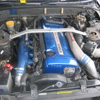Clutch Slave/master
Announcements
-
Similar Content
-
Latest Posts
-
Looks like you were right on the T pattern! I did that and it's finally fixed! Thanks a bunch.
-
By Dose Pipe Sutututu · Posted
Replacing the entire system with a Bosch Motorsports ABS system fixes the issue @PranKhas Probably not the cheapest nor cost effective way to fix his ABS problem 😂 -
I will reiterate... Pull the ABS fuse... At a minimum, good test to see if it's actually being caused by the ABS system... At the other end of the scale, if the vibration is from ABS turning on, last thing you want is when you're trying to brake, having ABS kick in when it shouldn't and now you can't actually stop at all... At least with ABS unplugged the worst issue is you need to be aware you're the one that needs to modulate pressure in an emergency.
-





Recommended Posts
Create an account or sign in to comment
You need to be a member in order to leave a comment
Create an account
Sign up for a new account in our community. It's easy!
Register a new accountSign in
Already have an account? Sign in here.
Sign In Now